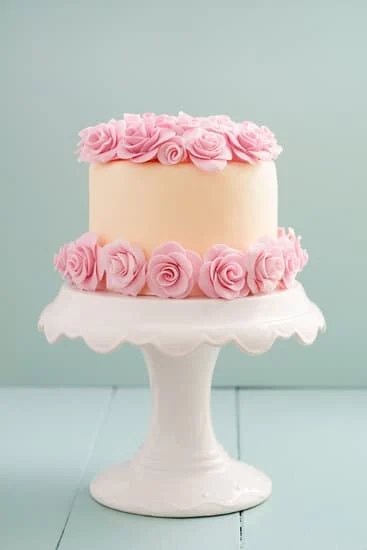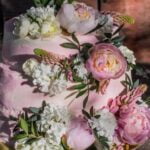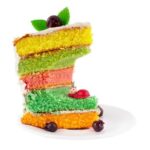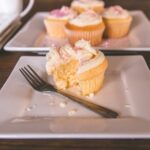What is the best cake to make for decorating? This question often sparks a lively debate among baking enthusiasts and professionals alike. As we delve into the world of cake decorating, it becomes clear that the foundation of a beautifully decorated cake lies in choosing the right type of cake base. From butter cakes to sponges and chiffons, each type brings its own unique qualities to the table when it comes to decorating.
When it comes to cake decorating, selecting the appropriate cake base is crucial for achieving the desired result. Butter cakes are dense and sturdy, making them a popular choice for intricate designs and sculpted cakes. On the other hand, sponge cakes provide a light and airy texture that pairs well with delicate decorations like fondant or fresh fruit. Chiffon cakes offer a balance between the two, offering a moist and tender crumb that can hold up to various frosting techniques.
Baking the perfect cake for decorating requires attention to detail and precision in following the recipe. Factors such as oven temperature, mixing method, and ingredient quality all play a role in ensuring your cake turns out just right. By honing your baking skills and experimenting with different types of cakes, you can discover which one serves as the ideal canvas for your creative decorations.
The Importance of Choosing the Right Cake Base for Decorating
When it comes to cake decorating, one of the most important factors to consider is selecting the right cake base. The type of cake you choose can have a significant impact on how well it holds up to decoration techniques, as well as the overall appearance and taste of the finished product. So, what is the best cake to make for decorating? Let’s explore some options.
One popular choice for decorating cakes is a butter cake. Butter cakes are known for their rich and moist texture, which provides a solid foundation for various frosting and icing styles. The sturdy crumb structure of butter cakes makes them ideal for intricate designs and decorations that require a stable base. Additionally, butter cakes have a delicious flavor that complements a wide range of frosting flavors.
Another option to consider is a sponge cake. Sponge cakes are light and airy in texture, making them easy to work with when assembling layered cakes or adding delicate decorations. Their subtle flavor allows them to pair well with different types of fillings and frostings. However, sponge cakes can be more fragile than butter cakes, so they may require extra care when handling during the decorating process.
For those looking for a balance between richness and lightness, chiffon cakes could be the perfect choice for decorating. Chiffon cakes offer a tender crumb similar to sponge cakes but with added moisture from oil in the batter. This makes chiffon cakes versatile for both simple decorations and more elaborate designs. Their neutral flavor profile also makes them an excellent canvas for experimenting with different frosting flavors and decorative elements.
Overall, the best cake for decorating ultimately depends on your personal preferences and the specific design you have in mind. It’s essential to consider factors such as texture, flavor, and stability when choosing a cake base for your next decorating project. Experimenting with different types of cakes can help you discover which one works best for your individual style and creative vision.
| Cake Type | Characteristics |
|---|---|
| Butter Cake | Rich texture ideal for intricate designs; pairs well with various frosting flavors |
| Sponge Cake | Light and airy texture suitable for layered designs; delicate flavor profile |
| Chiffon Cake | Tender crumb with added moisture; versatile for simple or elaborate decorations |
A Comparison of Different Types of Cakes Suitable for Decorating (Butter, Sponge, Chiffon, Etc)
When it comes to cake decorating, choosing the right cake base is crucial to the success of your creation. The type of cake you use can impact how well it holds up to decorations, frosting, and icing. Different types of cakes have varying textures, flavors, and structures that can affect the overall look and taste of your decorated masterpiece. Let’s explore a few popular options and compare their suitability for decorating.
- Butter Cake: Butter cakes are known for their rich and moist texture, making them a popular choice for decorating. Their dense crumb structure provides a sturdy base for elaborate decorations and intricate designs. Additionally, butter cakes have a delicious flavor that pairs well with various frosting and fillings.
- Sponge Cake: Sponge cakes are light and airy, making them an excellent choice for layered cakes and delicate decorations. Their softer texture absorbs syrups, fillings, and frostings well, creating a harmonious balance of flavors in each bite. However, sponge cakes may require more care when handling intricate decorations due to their tenderness.
- Chiffon Cake: Chiffon cakes combine the best qualities of butter and sponge cakes, featuring a tender crumb with a moist texture. This versatile cake is ideal for both simple designs and elaborate creations. Chiffon cakes provide a stable structure for decorations while offering a light and fluffy consistency that appeals to many palates.
When deciding what is the best cake to make for decorating, consider the specific design requirements of your project. If you plan to create intricate detailing or sculpted elements on your cake, opt for a butter cake for its durability. For lighter decorations or airy designs, sponge or chiffon cakes may be more suitable choices. Ultimately, the best cake for decorating depends on your personal preferences, skill level, and desired outcome.
- Practice baking different types of cakes to familiarize yourself with their textures and characteristics.
- Experiment with various frosting techniques on sample cakes to determine which complements each type of cake best.
- Consider the theme or occasion of your decoration project when selecting the appropriate cake base for maximum impact.
Tips for Baking the Perfect Cake for Decorating
When considering what is the best cake to make for decorating, it is essential to focus on the texture, flavor, and durability of the cake. One of the most popular choices for decorating is a moist and dense butter cake. Butter cakes have a rich flavor that pairs well with various frosting and icing options.
They also provide a stable base for intricate designs and decorations. Another great option is a sponge cake, known for its light and airy texture. Sponge cakes absorb flavors well and are ideal for layered cakes with fillings.
Chiffon cakes are another excellent choice for decorating due to their moistness and tender crumb. Chiffon cakes incorporate oil into the batter, giving them a light texture while still being sturdy enough to support decorations.
When deciding on the best cake for decorating, it is crucial to consider the theme of your design, as different types of cakes lend themselves better to specific styles of decoration. For example, a buttercream-frosted cake may work well with a classic butter cake base, while a naked or lightly frosted cake could benefit from the delicate nature of a chiffon or sponge cake.
In addition to selecting the right type of cake for decorating, it is essential to pay attention to baking techniques to ensure optimal results. Properly measuring ingredients, following baking times accurately, and allowing the cake to cool completely before decorating are crucial steps in achieving bakery-quality results at home. By focusing on both the type of cake used and the baking process itself, you can set yourself up for success in creating beautifully decorated cakes for any occasion.
| Cake Type | Attributes |
|---|---|
| Butter Cake | Rich flavor |
| Sponge Cake | Light and airy texture |
| Chiffon Cake | Moist and tender crumb |
Choosing the Best Frosting and Icing for Your Decorated Cake
When it comes to decorating a cake, choosing the right frosting and icing is just as important as selecting the perfect cake base. The type of frosting you use can greatly impact the overall look, taste, and texture of your decorated creation. With so many options available, it can be overwhelming to decide which one is best for your project. Here are some popular choices to consider:
- Buttercream: Buttercream is a classic choice for cake decorating due to its versatility and ease of use. This creamy frosting can be flavored and colored in countless ways, making it suitable for various designs and themes.
- Fondant: Fondant is a smooth, pliable icing that gives cakes a sleek and polished finish. It is great for creating intricate details, textures, and shapes on your cake. While fondant may not be as tasty as buttercream, it offers a clean canvas for artistic expression.
- Cream Cheese Frosting: Cream cheese frosting is tangy, creamy, and slightly less sweet than traditional buttercream. It pairs exceptionally well with moist cakes like carrot or red velvet, adding a delicious contrast of flavors.
Each type of frosting has its own unique characteristics that can enhance the final look and taste of your decorated cake. Consider the flavor profile of your cake base when selecting the frosting to ensure a harmonious combination. Experiment with different frostings and icings to find what works best for your decorating style and preferences. Ultimately, the best frosting for your decorated cake is one that complements the design while satisfying your taste buds.
Remember that practice makes perfect when it comes to cake decorating. Don’t be afraid to try new techniques and combinations until you find what works best for you. With the right frosting and icing paired with a well-baked cake base, you’ll be well on your way to creating stunning decorative masterpieces that will impress any audience.
Whether you opt for buttercream’s smooth finish or fondant’s sculptural possibilities, choosing the best frosting and icing for your decorated cake is an essential step in achieving professional-looking results. Take into account the flavor profile of your cake base, desired design aesthetic, and personal preferences when making this decision.
By experimenting with different types of frostings and icings during your baking journey, you’ll discover what works best for each specific project so you can confidently tackle any decorating challenge that comes your way.
Step-by-Step Guide on How to Assemble and Decorate a Cake Like a Pro
When it comes to decorating a cake like a pro, one of the most crucial steps is choosing the right cake base. The best cake to make for decorating is a sturdy and flavorful base that can hold up well under the weight of decorations and frosting.
One popular option is a classic butter cake, known for its richness and moisture, making it a great canvas for decorating. Another excellent choice is a sponge cake, which has a light texture that absorbs flavors well and provides a smooth surface for decorations.
Choosing the Best Cake Base
When selecting the best cake to make for decorating, consider the flavor profile you want to achieve. A butter cake lends itself well to traditional flavors like vanilla or chocolate, while a chiffon cake offers a light and airy texture that pairs perfectly with fruit fillings. Ultimately, the key is to choose a cake that complements your chosen decorations and icing flavors.
Baking Tips for Perfect Cake
To ensure your decorated cake turns out beautifully, follow some baking tips for success. Make sure your ingredients are at room temperature before mixing to create a smooth batter. Use quality baking pans lined with parchment paper to prevent sticking and ensure even baking. Additionally, be mindful of oven temperature accuracy and avoid overmixing the batter to maintain the desired texture in your finished cake. By following these tips, you can set yourself up for success in your decorating endeavors.
Creative Ideas for Cake Decorations and Designs
When it comes to cake decorating, the possibilities are endless. From elegant floral designs to fun and whimsical themes, there are so many creative ways to make your cake stand out. Whether you are a beginner looking to try your hand at decorating for the first time or a seasoned pro looking for new inspiration, here are some creative ideas for cake decorations and designs.
Theme-Based Decorations
One of the most popular ways to decorate a cake is by choosing a theme that reflects the occasion or the recipient’s interests. Whether you’re making a birthday cake for a sports enthusiast or a baby shower cake with a cute animal theme, incorporating themed decorations can really make your cake pop. Consider using fondant cutouts, edible images, or even small figurines to tie in your chosen theme.
Textured Designs
Adding texture to your cake can bring visual interest and dimension to your design. You can achieve this by using different piping techniques, such as swirls, rosettes, or basketweave patterns. Another option is to use edible elements like sprinkles, crushed nuts, or edible glitter to add depth and texture to your finished creation.
Geometric Patterns
For a modern and chic look, consider incorporating geometric patterns into your cake design. This can be achieved using stencils, fondant cutters, or even piping bags with different shaped tips. Try experimenting with hexagons, triangles, or chevron patterns for a trendy and eye-catching finish.
With these creative ideas in mind, you can elevate your next cake decorating project to new heights. Remember to have fun experimenting with different techniques and designs to create a truly unique masterpiece that will impress everyone who sees it.
Troubleshooting Common Decorating Issues and How to Fix Them
When it comes to decorating cakes, there is a myriad of issues that can arise during the process. From cracked cakes to uneven frosting, these common problems can be frustrating for any baker. However, with some knowledge and tips on troubleshooting, you can easily fix these issues and create stunning cake decorations.
One common issue that many bakers face is a lopsided or uneven cake surface. This can happen due to uneven baking or improper leveling of the cake layers. To fix this problem, you can use a cake leveler or a serrated knife to carefully trim the top of the cake layers to create an even surface. Additionally, you can use a crumb coat of frosting to help smooth out any imperfections before adding the final layer of frosting.
Another common decorating issue is air bubbles in the frosting or icing. These unsightly bubbles can ruin the overall look of your decorated cake. To prevent air bubbles from forming, make sure to properly mix your frosting or icing and avoid overmixing, which can introduce air into the mixture. If air bubbles do form, gently tap the sides of the cake with a spatula or use a toothpick to release them before smoothing out the frosting.
Lastly, if your frosting starts to melt or slide off the cake due to high temperatures or improper storage, don’t panic. Simply place your cake in the refrigerator for a few minutes to allow the frosting to set and firm up again.
You can also try using a stiffer frosting recipe that is better suited for warmer temperatures. By addressing these common decorating issues with these simple troubleshooting tips, you can ensure that your next cake decoration project is a success.
Conclusion
When it comes to making your next cake decoration project a success, choosing the right cake base is crucial. The type of cake you use can significantly impact the final outcome of your decorated masterpiece.
Through this article, we have explored different types of cakes suitable for decorating, such as butter, sponge, and chiffon cakes, each offering unique characteristics that can enhance your decorating experience. By understanding the importance of selecting the best cake for decorating, you are already on your way to creating a visually stunning and delicious treat.
In addition to selecting the right cake base, baking the perfect cake is essential for successful decorating. Tips shared in this article can guide you in achieving a moist and flavorful cake that serves as a canvas for your creative decorations. From proper mixing techniques to ideal baking times, mastering these tips will elevate the overall quality of your decorated cake.
Furthermore, choosing the best frosting and icing is another key element in creating an eye-catching decorated cake. By exploring various options and finding the perfect combination for your specific design needs, you can enhance both the appearance and taste of your creation.
Whether it’s buttercream, fondant, or ganache, selecting the appropriate frosting and icing will bring your vision to life and leave a lasting impression on those who indulge in your confectionary work of art. In conclusion, by following the advice provided in this article and practicing with dedication, you can confidently tackle your next cake decoration project with skill and creativity.
Frequently Asked Questions
What Cakes Are Best for Decorating?
Cakes with a smooth and flat surface, like sponge cakes or butter cakes, are best for decorating. These types of cakes provide a stable base for frosting, fondant, and other decorations to adhere to without any obstacles.
What Type of Cake Is Easiest to Decorate?
A sheet cake is often seen as the easiest type of cake to decorate because of its large, flat surface area. With minimal layers and simple shapes, sheet cakes can be quickly covered with frosting or fondant and decorated with ease, making them ideal for beginners.
How to Make a Cake Good for Decorating?
To make a cake good for decorating, it is important to start with a properly baked and cooled cake. Leveling the top of the cake will ensure a smooth surface for decorating.
Applying a crumb coat before adding final decorations helps seal in any loose crumbs and creates a solid foundation. Using sturdy buttercream or ganache can also help keep decorations in place on the cake without melting or sliding off.

Welcome to our cake decorating blog! My name is Destiny Flores, and I am the proud owner of a cake decorating business named Cake Karma. Our mission is to provide delicious, beautiful cakes for all occasions. We specialize in creating custom cakes that are tailored specifically to each customer’s individual needs and tastes.





